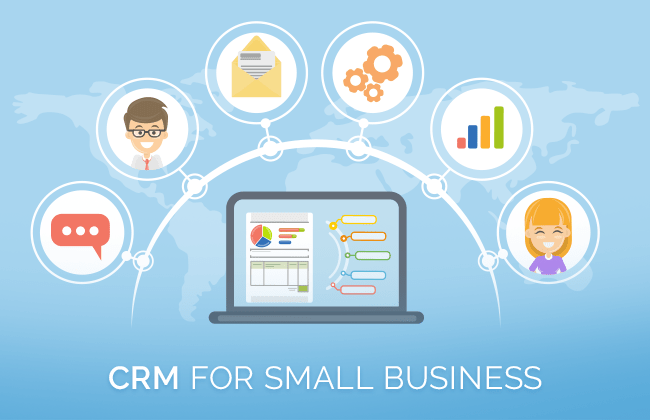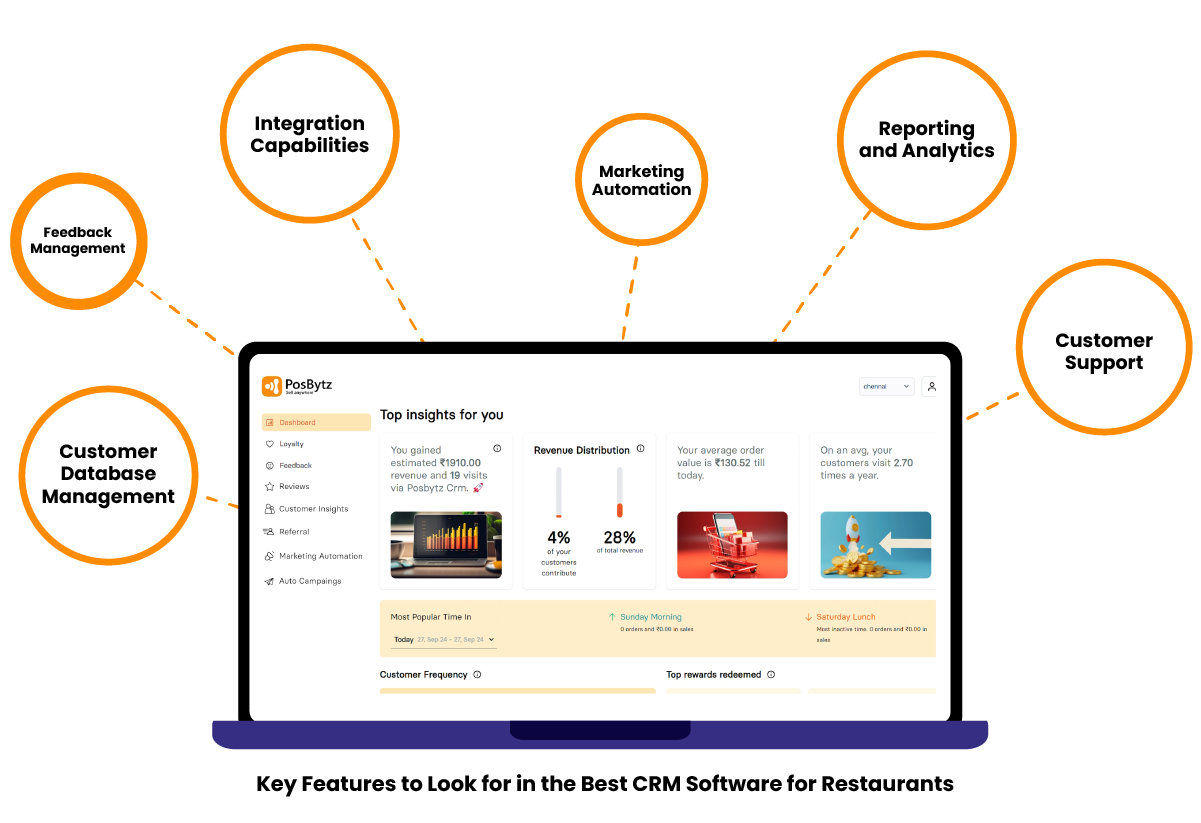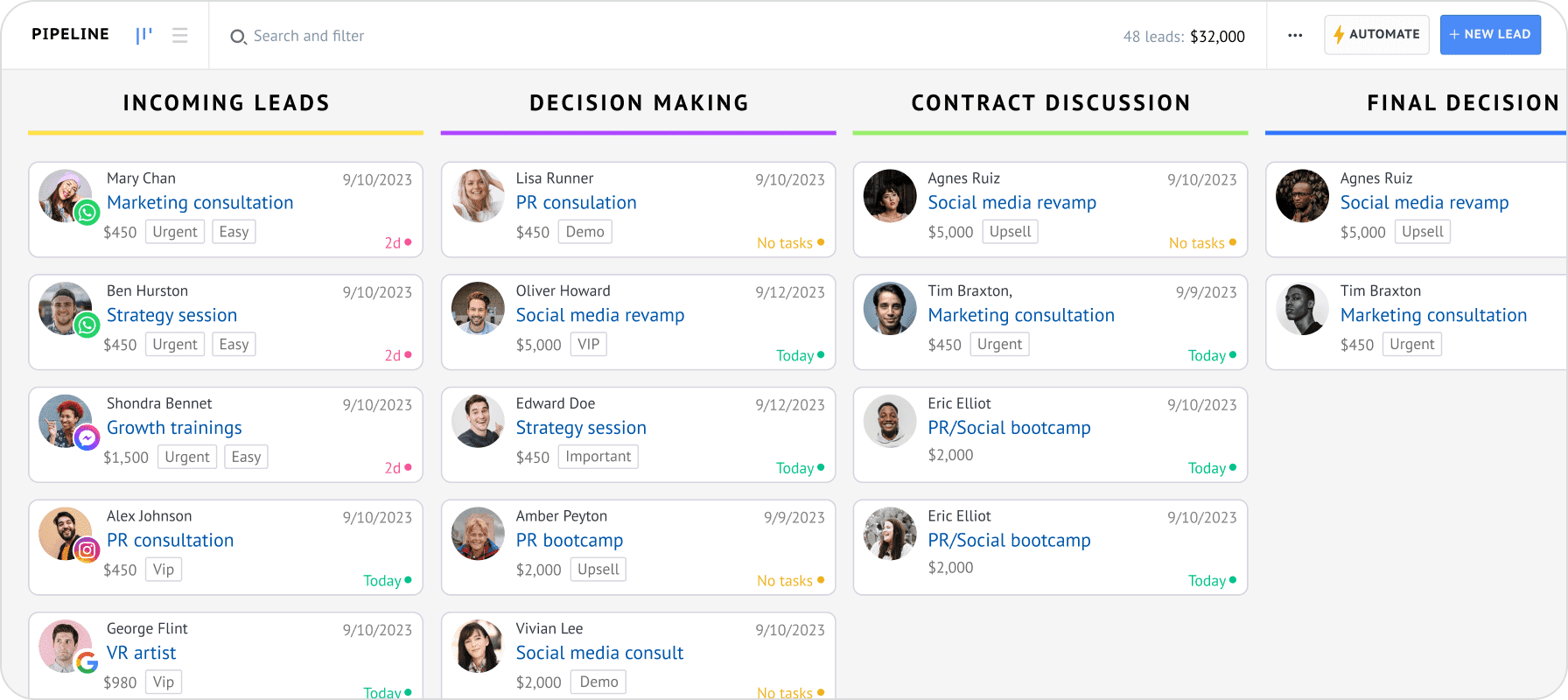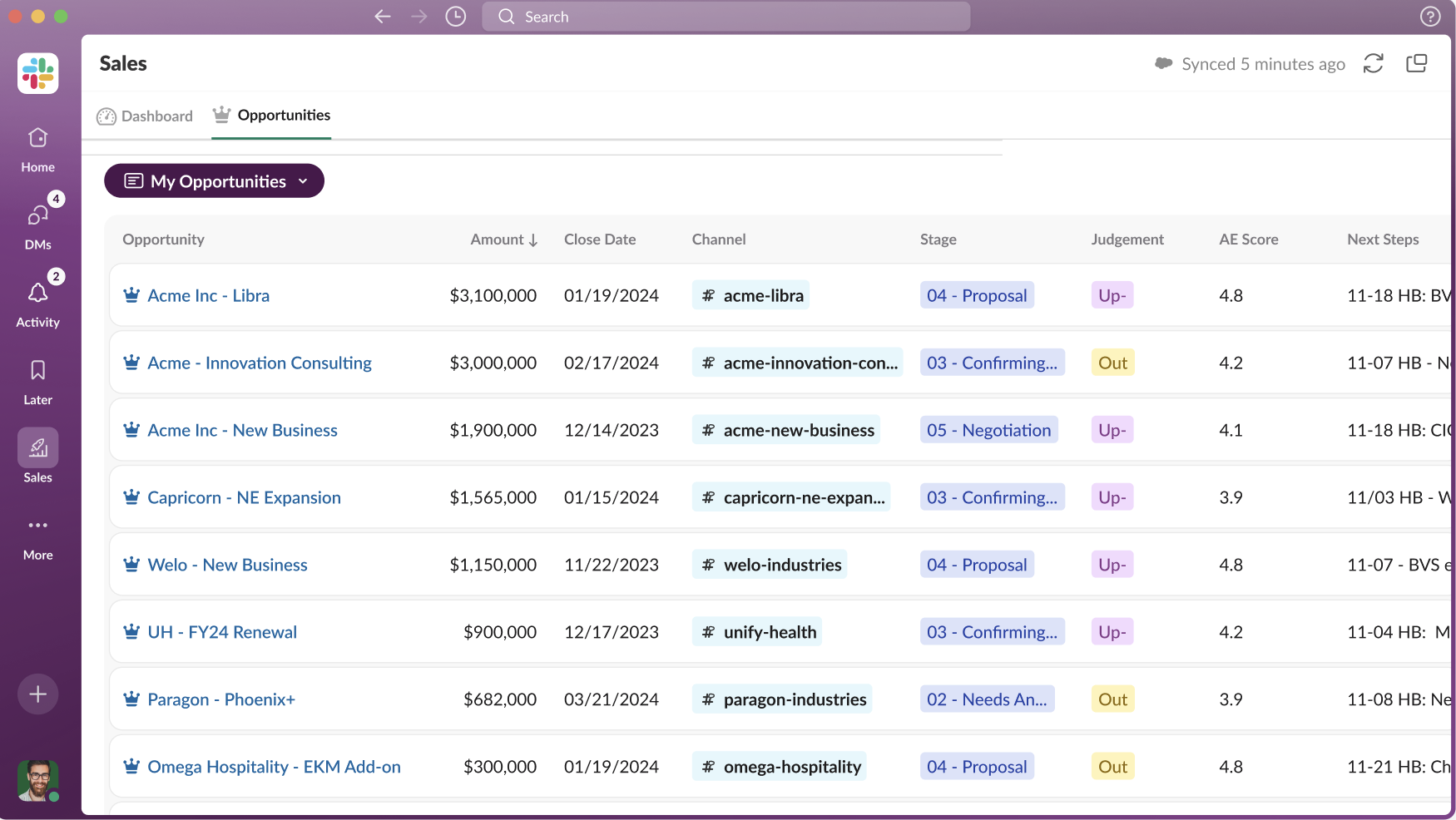
The Retail Revolution: Why CRM Matters More Than Ever
The retail landscape has undergone a seismic shift. The days of simply opening your doors and hoping for the best are long gone. Today’s consumer is empowered, informed, and has a universe of choices at their fingertips. They expect personalized experiences, seamless interactions, and a genuine connection with the brands they choose to support. This is where Customer Relationship Management (CRM) software steps in, transforming your small retail business from a transactional operation into a thriving hub of customer engagement.
For small retail businesses, the stakes are particularly high. You’re not just competing with the big box stores; you’re vying for attention against the convenience and vast selection of online giants. To survive, you need to understand your customers intimately. You need to know their preferences, their purchase history, and their pain points. You need to build relationships that transcend a single transaction and foster loyalty that keeps them coming back for more. A CRM system is the key to unlocking this level of customer understanding and building a resilient, customer-centric business.
This article will delve deep into the world of CRM for small retail businesses. We’ll explore what a CRM is, why it’s essential, the benefits it offers, how to choose the right one, and how to implement it effectively. We’ll also look at real-world examples and provide practical tips to help you get started. Get ready to transform your retail business and build lasting relationships with your most valuable assets: your customers.
What Exactly is CRM and Why Do You Need It?
At its core, Customer Relationship Management (CRM) is a technology that helps businesses manage and analyze customer interactions and data throughout the customer lifecycle. It’s more than just a contact list; it’s a comprehensive system that helps you understand, engage, and retain your customers. Think of it as the central nervous system of your customer relationships.
Here’s a breakdown of what a CRM system typically does:
- Centralized Customer Data: It stores all your customer information in one place. This includes contact details, purchase history, communication logs, and any other relevant data.
- Improved Communication: It helps you track and manage all your interactions with customers, whether it’s email, phone calls, or social media messages.
- Sales Automation: It can automate repetitive sales tasks, such as sending follow-up emails or creating sales reports.
- Marketing Automation: It allows you to segment your customers and create targeted marketing campaigns based on their preferences and behavior.
- Enhanced Customer Service: It provides customer service representatives with the information they need to provide personalized and efficient support.
- Reporting and Analytics: It offers valuable insights into your customer behavior, sales performance, and marketing effectiveness.
For small retail businesses, a CRM is not a luxury; it’s a necessity. It empowers you to:
- Know Your Customers: Understand their needs, preferences, and buying habits.
- Personalize Interactions: Tailor your communication and offers to each customer.
- Improve Customer Service: Provide faster and more efficient support.
- Increase Sales: Identify and capitalize on sales opportunities.
- Boost Customer Loyalty: Build lasting relationships that keep customers coming back.
The Tangible Benefits: What CRM Can Do for Your Bottom Line
Investing in a CRM system for your small retail business is not just about adopting new technology; it’s about investing in your future. The benefits extend far beyond simply organizing customer data. Here are some tangible ways a CRM can positively impact your bottom line:
Increased Sales and Revenue
This is the most direct and impactful benefit. A CRM helps you identify and nurture leads, personalize your sales efforts, and close deals more effectively. By understanding your customers’ needs and preferences, you can offer them the right products and services at the right time, leading to increased sales and revenue. For example, if a customer frequently buys running shoes, your CRM can automatically alert you when a new model arrives or offer them a discount on running apparel.
Improved Customer Retention
Acquiring new customers is expensive. Retaining existing customers is much more cost-effective. A CRM helps you build stronger customer relationships by providing personalized experiences and proactive support. By tracking customer interactions and preferences, you can identify at-risk customers and take steps to prevent them from churning. For example, you can send a personalized email to a customer who hasn’t made a purchase in a while, offering them a special discount or exclusive access to a new product.
Enhanced Customer Service
Happy customers are loyal customers. A CRM provides your customer service team with the tools they need to provide fast, efficient, and personalized support. By having access to a customer’s purchase history, communication logs, and other relevant information, your team can quickly resolve issues and provide tailored solutions. This leads to increased customer satisfaction and positive word-of-mouth referrals. For example, a customer calls with a question about a product. Your customer service representative can instantly access their purchase history and quickly provide the necessary information.
Streamlined Marketing Efforts
A CRM allows you to segment your customers and create targeted marketing campaigns. This means you can send the right message to the right customer at the right time, maximizing your marketing ROI. For example, you can create a targeted email campaign to promote a new product to customers who have previously purchased similar items. You can also track the performance of your marketing campaigns and make data-driven decisions to improve your results.
Improved Efficiency and Productivity
A CRM automates many of the repetitive tasks associated with customer management, freeing up your team to focus on more strategic initiatives. This includes tasks like sending follow-up emails, creating sales reports, and managing customer data. By automating these tasks, you can improve efficiency and productivity, allowing your team to do more with less. For example, instead of manually entering customer data, your CRM can automatically capture it from online forms and other sources.
Better Data-Driven Decision Making
A CRM provides valuable insights into your customer behavior, sales performance, and marketing effectiveness. This data allows you to make informed decisions about your business. You can identify your most profitable customers, understand which marketing campaigns are most effective, and optimize your sales processes. For example, you can analyze your sales data to identify your best-selling products and adjust your inventory accordingly.
Choosing the Right CRM: A Step-by-Step Guide
Selecting the right CRM system for your small retail business is a crucial decision. The market is flooded with options, each boasting a unique set of features and benefits. To make the best choice, follow these steps:
1. Define Your Needs and Goals
Before you start looking at different CRM systems, take the time to clearly define your needs and goals. What problems are you trying to solve? What features are essential? What are your budget and resource constraints? Consider the following questions:
- What are your primary customer management challenges?
- What specific tasks do you want to automate?
- What key performance indicators (KPIs) do you want to track?
- What is your budget for the CRM system?
- Do you have existing software that needs to integrate with the CRM?
Answering these questions will help you narrow down your options and identify the CRM systems that are best suited for your business.
2. Research Different CRM Systems
Once you have a clear understanding of your needs and goals, it’s time to research different CRM systems. Consider the following factors:
- Features: Does the CRM offer the features you need, such as contact management, sales automation, marketing automation, and customer service tools?
- Ease of Use: Is the CRM easy to learn and use? Does it have a user-friendly interface?
- Scalability: Can the CRM scale to accommodate your business growth?
- Integration: Does the CRM integrate with your existing software, such as your point-of-sale (POS) system, email marketing platform, and accounting software?
- Pricing: What is the pricing structure? Is it affordable for your business?
- Customer Support: Does the vendor offer adequate customer support?
- Reviews and Ratings: Read reviews and ratings from other users to get an idea of their experiences.
Some popular CRM systems for small retail businesses include:
- Zoho CRM: A comprehensive CRM with a wide range of features and affordable pricing.
- HubSpot CRM: A free CRM with powerful features and excellent marketing automation capabilities.
- Salesforce Sales Cloud: A robust CRM with a wide range of features, but it can be more complex and expensive.
- Pipedrive: A sales-focused CRM designed for small businesses.
- Freshsales: A user-friendly CRM with a focus on sales and customer support.
3. Evaluate and Compare Your Options
Create a spreadsheet or table to compare the different CRM systems you’re considering. List the features, pricing, and other factors that are important to you. This will help you objectively evaluate your options and identify the CRM system that best meets your needs.
Consider requesting demos or free trials of the CRM systems you’re interested in. This will allow you to test the software and see how it works in practice. You can also talk to other small retail businesses that use the CRM systems you’re considering to get their feedback.
4. Choose the Right CRM System
Based on your research and evaluation, choose the CRM system that best meets your needs and budget. Make sure to consider the long-term implications of your decision, such as the scalability of the system and the vendor’s reputation. Don’t be afraid to take your time and make an informed decision. Selecting the right CRM is a crucial step towards building a customer-centric business.
Implementing Your CRM: A Practical Guide
Once you’ve chosen your CRM, the next step is to implement it. This process can seem daunting, but with careful planning and execution, you can ensure a smooth transition and maximize the benefits of your new CRM system.
1. Plan Your Implementation
Before you start implementing your CRM, take the time to create a detailed implementation plan. This plan should include the following:
- Project Goals: Clearly define your goals for the CRM implementation. What do you want to achieve?
- Timeline: Set a realistic timeline for the implementation.
- Team: Identify the team members who will be involved in the implementation.
- Data Migration: Plan how you will migrate your existing customer data to the new CRM system.
- Training: Plan how you will train your team on how to use the CRM system.
- Budget: Set a budget for the implementation, including the cost of the CRM system, training, and any other expenses.
A well-defined implementation plan will help you stay organized and on track throughout the implementation process.
2. Migrate Your Data
Migrating your existing customer data to the new CRM system is a critical step. Make sure to clean and organize your data before migrating it. This will ensure that your data is accurate and consistent. Consider the following steps:
- Data Backup: Back up your existing customer data before starting the migration.
- Data Cleaning: Clean and organize your data to remove duplicates, correct errors, and standardize formatting.
- Data Mapping: Map your existing data fields to the corresponding fields in the new CRM system.
- Data Import: Import your data into the new CRM system.
- Data Verification: Verify that your data has been imported correctly.
If you have a large amount of data, consider using a data migration tool or hiring a data migration specialist to help you with this process.
3. Customize Your CRM
Most CRM systems allow you to customize them to meet your specific needs. Take the time to customize your CRM to fit your business processes. This may include:
- Adding Custom Fields: Add custom fields to capture the specific information you need about your customers.
- Customizing Workflows: Customize workflows to automate tasks and streamline your processes.
- Integrating with Other Systems: Integrate your CRM with other systems, such as your POS system, email marketing platform, and accounting software.
Customizing your CRM will help you get the most out of it and ensure that it meets your specific business requirements.
4. Train Your Team
Training your team on how to use the CRM system is essential for its success. Provide comprehensive training to your team members, including:
- Introduction to the CRM System: Provide an overview of the CRM system and its features.
- How to Use the CRM System: Teach your team how to use the CRM system to manage customer data, track interactions, and automate tasks.
- Best Practices: Share best practices for using the CRM system to maximize its benefits.
- Ongoing Support: Provide ongoing support to your team members to help them with any questions or issues they may have.
Investing in training will ensure that your team is comfortable using the CRM system and that they can leverage its features to improve their performance.
5. Monitor and Optimize
Once your CRM system is up and running, it’s important to monitor its performance and make adjustments as needed. Track your key performance indicators (KPIs) to measure the effectiveness of your CRM system. Regularly review your data and reports to identify areas for improvement. Continuously optimize your CRM system to ensure that it’s meeting your evolving business needs. This may include adding new features, customizing workflows, or training your team on new features.
Real-World Examples: CRM in Action
Seeing how CRM works in practice can be incredibly helpful. Here are a few examples of how small retail businesses are leveraging CRM to achieve success:
- The Local Bookstore: A local bookstore uses its CRM to track customer purchase history and reading preferences. They send personalized recommendations and exclusive offers to customers based on their interests. This leads to increased sales and customer loyalty. They also use the CRM to manage their loyalty program, rewarding frequent shoppers with discounts and early access to new releases.
- The Boutique Clothing Store: A boutique clothing store uses its CRM to manage customer contact information, track purchase history, and send personalized marketing emails. They segment their customers based on their style preferences and send targeted emails promoting new arrivals and special sales. They also use the CRM to provide personalized customer service, such as remembering a customer’s size or preferred brands.
- The Specialty Coffee Shop: A specialty coffee shop uses its CRM to track customer loyalty, manage online orders, and personalize the customer experience. They offer a rewards program where customers earn points for every purchase, which they can redeem for free drinks or merchandise. They also use the CRM to track customer preferences, such as their favorite coffee drinks and pastries. This allows them to provide personalized recommendations and improve customer satisfaction.
These examples illustrate the versatility of CRM and how it can be adapted to meet the unique needs of different retail businesses. The key is to use the CRM to understand your customers better and provide them with the personalized experiences they crave.
Overcoming Common Challenges
While CRM offers immense benefits, implementing and using it effectively can present some challenges. Here’s how to overcome them:
- Data Entry: Ensure data accuracy by implementing standardized data entry processes. Consider using data import tools or integrating with your POS system to automate data entry.
- User Adoption: Provide comprehensive training and ongoing support to encourage user adoption. Highlight the benefits of using the CRM and make it easy for your team to access and utilize.
- Integration Issues: Carefully plan the integration process and choose a CRM that integrates seamlessly with your existing systems. Seek technical assistance if needed.
- Cost: Choose a CRM that fits your budget and offers a good return on investment. Consider starting with a free or low-cost CRM and upgrading as your needs grow.
- Lack of Time: Allocate sufficient time for implementation and training. Prioritize tasks and break down the implementation process into smaller, manageable steps.
The Future of CRM in Retail
The future of CRM in retail is bright, with exciting new trends emerging:
- Artificial Intelligence (AI): AI-powered CRM systems can analyze customer data and provide personalized recommendations, predict customer behavior, and automate tasks.
- Mobile CRM: Mobile CRM apps allow retailers to access customer data and manage customer interactions on the go.
- Social CRM: Social CRM integrates social media data with CRM data, allowing retailers to engage with customers on social media and gain valuable insights into their preferences and behavior.
- Personalized Experiences: Retailers will increasingly focus on providing personalized experiences to customers, using CRM to tailor their interactions and offers.
As technology continues to evolve, CRM will become even more powerful and essential for small retail businesses. By embracing these trends, you can stay ahead of the curve and build a customer-centric business that thrives in the competitive retail landscape.
Final Thoughts: Embrace the Power of CRM
In today’s dynamic retail environment, a CRM system is no longer a luxury; it’s a strategic imperative. It’s the engine that drives customer understanding, fosters loyalty, and fuels sustainable growth. By embracing the power of CRM, you can transform your small retail business into a customer-centric powerhouse, capable of thriving in the face of any challenge.
Don’t wait. Start exploring the possibilities of CRM today. Your customers, and your bottom line, will thank you for it.


